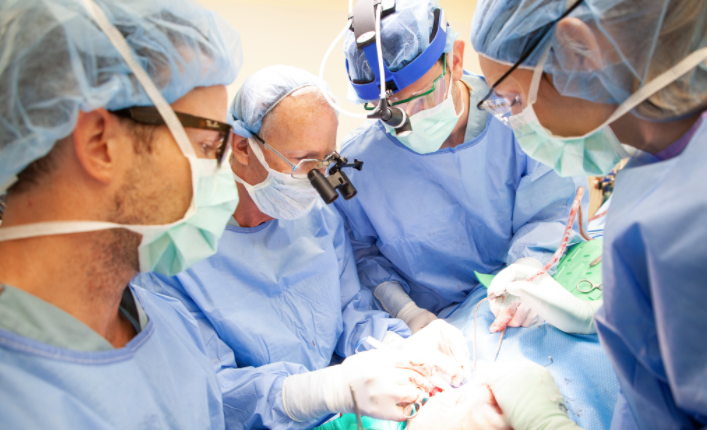CommentsMEDICAL WATCH - In 2013, two women in their 30s died in a plastic surgeon’s California ambulatory center as a result of unnecessary surgeries;
an autopsy of victim one showed perforations of the pleura, as well as rib fractures and hemorrhaging. The patient likely died of trauma and cardiac dysfunction. Toxic levels of lidocaine were found. A Medical Board of California (MBC) document gives details of three of this doctor’s other patients: one dead, two harmed. This doctor performed elective cosmetic surgery on a patient with congestive heart failure, had at least a dozen lawsuits against him, and yet still returned to practice.
In articles published December 16 and 17, 2021 in the Los Angeles Times, reporters brought to light that the MBC reinstated medical licenses to doctors who sexually abused consumers, lied, turned violent, and one who told a vulnerable patient to kill herself. The articles highlighted such aberrant, reprehensible behavior that even the doctor-protecting lobby, the California Medical Association (CMA) called for change.
Stopping doctors from committing surgical assault ought also to be a focus for the CMA and MBC. Surgical battery by doctors who do plastic and cosmetic procedures is rampant and covered-up. Some doctors do plastic surgery for profit, not patients; they lie for each other and silence victims with gags and lawsuits. Also, human tissue brings huge profits.
According to the International Society of Aesthetic Plastic Surgery, the number of Brazilian Butt Lifts performed globally increased 77.6 percent from 2015 to 2019. In 2020, it was reported that 1 in 3000 people die from this procedure. Some breast implants cause cancer and other problems. There is a non-surgical procedure that melts faces.
Doctors falsely claim they can remove metabolically active fat tissue without negative physiological or other consequences. They operate aggressively, risking lives. A doctor sanctioned by the MBC recently did liposuction to the back, thighs, arms, ankles, and fat transfer to the buttocks of a healthy woman; she bled to death.
A brief background
Reconstructive surgery dates back at least to ancient India where skin grafts and other procedures are documented in a text by the legendary surgeon Sushruta, who had students take an oath to do no harm. He believed surgeons should be cheerful, well spoken, and honest, and warned against ignorant, greedy, surgical intervention devoid of judgment.
Various surgeries were done throughout centuries; religious objection halted some. The first successful cleft palate surgery was done in 1820. During World War I and II, doctors used plastic surgery to restore function to people after burns, gunshots, and other injuries.
In 1926, liposuction got off to a bad start in France when Dr. Charles Dujarier did liposuction on a ballet dancer’s legs and the woman got gangrene and died. Cosmetic surgery picked up in the U.S. in the 1960s, growing in use as doctors focused on sculpting the body and face (primarily on females) in ways the doctors deemed ideal.
Plentiful reviews for founders of liposuction, authors of their reference texts, and developers of their instruments, are heartbreaking: “His lousy lipo job will haunt me every day of my life; I hate him for that.” “They hustle you for more procedures, while belittling your looks.” “The doctor is a complete salesman. I have an indent in my outer butt cheek from him taking too much fat.”
In the 2000s there were several exploitive TV shows in which plastic surgeons did rounds of invasive surgery to vulnerable people, risking lives and long-term health. These doctors normalized dangerous, harmful, non-curative surgery, which misled consumers and benefited doctors, device and insurance companies, and investors.
In California, the MBC uses a plastic surgery expert who was on several of those TV shows. The Military Health Agency excluded this doctor as a Tricare Authorized Provider because he “retained the beneficiary’s advance payment, despite being made aware on multiple occasions that his actions were contrary to Federal regulations put in place for our military members who have sacrificed so much for their country.”
What happened to care and common sense? What happened to Sushruta’s creed?
Liposuction is part of / added to many procedures. The FDA says a physician is unable to see where the liposuction cannula is, so internal organs, including intestines, may be perforated. This may result in more surgery, chronic pain and health problems, or death.
Board certified surgeons might learn liposuction from a three-day course given by a dermatologist and taught by a nurse practitioner. Doctors may tell consumers they learned from a top university, but in truth, they read instructions for a tool out of a box.
In a class taught at a top university, one of the slides says, “Liposuction reduces the number of adipocytes, regardless of their size. Should be long lasting results.” The cells that are removed are gone, there is no getting them back, however, studies on humans and rodents show that remaining cells increase in size after liposuction.
As a part of the endocrine system, fat is related to sex-hormone production, metabolism, and insulin interactions. Liposuction causes a decrease in metabolically active fat, and an increase in disease producing visceral fat, which can lead to: type 2-diabetes, cardiovascular disease, cancer, Alzheimer’s disease, depression, and more.
Since fat removal has been popular, these diseases have increased. The Health Technology Advisory Committee, (a group formed to study liposuction), warned, “Death, disfigurement, fat tissue deformities and disease processes caused by liposuction should be a matter for serious public concern.”
In May 2019, desperate consumer reviews were found for 49 of 55 members of the Los Angeles Society of Plastic Surgeons. Consumer reports for 299 plastic surgeon members of the CMA and 172 trainees and fellows on a prominent doctor’s resume are cause for concern. The reviews are mostly by fit, healthy women, who are their main targets.
The women explain that these board certified plastic surgeons and others lied to them in response to thoughtful questions. They describe assaults, chronic pain, disfiguration, health problems, weird fat redistribution, unusual weight gain, betrayal, trauma, fabricated records and manipulated photos, threats, slander, and more. They complain surgeons removed part or all of their butts, waist, etc. for no reason, causing skin on bone adherence, empty skin, excruciating pain, and more. There is no place to turn for help.
Men are harmed too. On his blog Tom explains how doctors stripped his muscles out during liposuction. Power-assisted liposuction devices oscillate up to 4,000 times per minute and can more easily penetrate undesired structures.
Harmful voices in the field
The doctors’ insurance company provides doctors a handbook regarding malpractice with a section titled, Physiological and Psychiatric Aspect of Modifying Anatomy. In attempts to discredit victims, doctors falsely blame consumers they harmed via liposuction, reconstruction, breast implants, and more as having anxiety or factitious disorder.
From the medical boards and media the public hears, “Do your research. Find a plastic surgeon certified by the American Board of Plastic Surgery,” however misleading and malicious advertising is the norm. On well-trafficked surgery websites, so-called experts have vested financial interests. People don’t want to risk their health or life for cosmetic surgery, so doctors repeat propaganda. Consumers encourage each other to get unsound surgery before understanding what is in store for them long-term.
The Federal Trade Commission said the following about plastic surgery publicity: “Bogus marketers often use trickery and vague language to take advantage of people. For example, testimonials in ads can seem honest and heart-felt, but they may be completely fake, in fact, they may not disclose that actors or models have been paid to endorse the product. Even when testimonials come from people who have taken the product, personal stories aren’t reliable evidence of effectiveness. And lots of technical jargon may sound impressive, but by itself doesn’t prove effectiveness. Big words from a medical dictionary are no substitute for plain facts.”
Some consumers say, “It’s my body. I’ll do whatever I want with it,” unaware those surgeons may do what they want to you while you are unconscious. A high percentage of medical malpractice arises from breach-of-contract issues, including assault.
In a case of surgical assault, plastic surgeon Dr. Brian Brantner testified, “The motivation of consumers can be affected by their interaction with the physician. If the physician tells them they’re going to have no visible scars, they’re going to have no pain, they’re going to have a perfect result you can produce a pretty motivated patient.”
No honest answers
Plastic surgery residents take a multiple-choice test, the Plastic Surgery In-Service Exam, administered by American Society of Plastic Surgeons (ASPS).
On November 15, 2013 I called the ASPS with questions about the safety and science of liposuction, which my group was researching. They told me to call the American Board of Plastic Surgeons, (ABPS). I called ABPS. They referred me back to ASPS, so I called back and pressed ahead with questions.
ASPS No one is going to answer your questions. This is why it’s called elective surgery. If you have questions, call a doctor.
Me: But the doctors are salespeople. They perform non-curative, harmful surgery.
ASPS: (laughs) Yeah, I see what you mean, but realistically, no one will answer you.
Me: So there’s nowhere for consumers to get information?
ASPS: We’ve been around since 1931, and we have never given out answers. Call the American Board of Plastic Surgeons.
Me: Well, they told me to call you.
(Sasha Lauren, author of The Paris Predicament, is a patient safety educator and Citywatch contributor. As a L.M.T. she gave over 30,000 hours of therapeutic massage and taught massage, relaxation, and behavioral health skills. Her approach is holistic and preventative. The information presented in this article is not for personal medical or legal advice or instruction.)
















